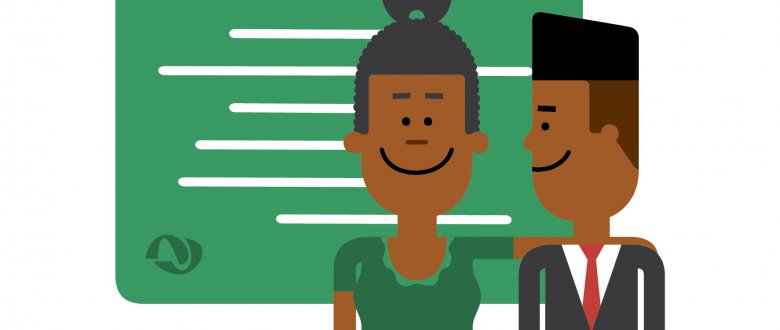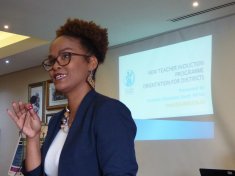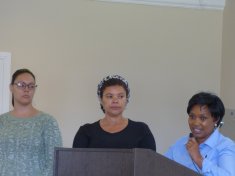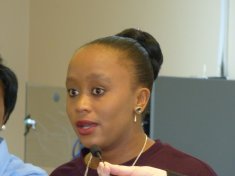
During the course of March and April 2019, VVOB South Africa, together with Inclusive Education South Africa (IESA) and the Department of Basic Education (DBE) organised a series of dissemination events to share insights and harvest lessons learned of the IESA-led New Teacher Induction pilot (NTIP). Dissemination Events were organised in the three pilot provinces, North West, Northern Cape and Free State. The purpose of these events was to share the results of the year-long pilot, touching on what are the gaps and what are the recommendations to take this programme forward. What were the programme’s successes and what were its challenges?
In the beginning there was…
Flashback to 2017 – new teachers are getting frustrated soon after they start and sometimes schools are facing difficulties to retain new teachers as teachers quickly realise that this is not what they were expecting. “With 40-50 children in my class, it is difficult for the pupils to focus, I don’t know how to manage this class, how to best teach these children” will sound familiar to those in the profession. And so new teachers become frustrated and some leave, as they do not feel ready, nor supported at the start of their short-lived teaching careers, feeling isolated and disconnected from other, more senior teachers. An induction programme could assist in supporting these new teachers. IESA, as part of a consortium led by VVOB under an EU-funded project, started developing an induction programme, which was kicked off by January 2018.

“Good teaching simply means a teacher has the skills and capacities to include all children in teaching and learning: the naughty ones, the slower ones, ..., the good performing learners,” according to Charlene Petersen from IESA.
Piloting the New Teacher Induction Programme (NTIP)
The programme set out to promote inclusion and to support new teachers in responding to diversity in the classroom. With 66 new teachers and 36 mentors from 28 schools participating in the pilot, the main objectives included retaining new teachers and boosting their morale and collegiality, minimizing their isolation, facilitating a smooth transition from university into teaching practice, and developing a professional identity as an inclusive teacher while, putting theory into practice.
“Teaching 20 years ago, is not like teaching today. The learners we had in the classroom 20 years ago, are not the learners we have in class today. Our country is very unique; there are many diverse cultures and this is demonstrated by our classroom environment. And so, this induction programme was really about preparing teachers to be able to respond to the diversity and the diverse needs of learners that they find in the classroom,” explains Charlene Petersen from IESA.

Bridging the gap
To bridge the gap, IESA investigated which skills and competencies new teachers require before they are sent out into the world. To kick start the pilot new teachers across the three provinces were identified to take part in the programme. Principals identified senior, experienced teachers who could take up the role of mentoring. The teachers received a teacher handbook divided into 10 modules, starting from the basics like ‘How do I set up my classroom’ to engagement with different guidelines like Screening, Identification, Assessment and Support (SIAS). The mentors received a mentor handbook. During the course of one year, mentor and teacher would meet at specific times for support and guidance. In addition, IESA organised expert input sessions once per month on a specific topic.
Harvesting and disseminating results

The evaluation was designed to answer questions around the relevance, efficiency, effectiveness and impact of the NTIP. Therefore, a mixed method design was set up, generating both qualitative and quantitative data. Overall, the feedback was very positive. What worked well was that the induction programme formalises and structures the support given to teachers. Also, the fact that different stakeholders are involved in offering support - IESA, mentor, district – seems to have a positive impact. Whereas university is more about methodology and theory, the NTIP bridges the gap between the theory and the practice.
The programme works best at the start of the career of the new teacher. Ideally, mentors are school-based, which allows them to provide ad-hoc support. From a mentoring point of view, not only did the mentors get to share their valuable experience gained over several years, they also reported to have deepened their own knowledge of inclusive education. A big challenge, though, is for mentors to have sufficient time allocated to provide support. With testimonies from different teachers taking part in the programme, the results were illustrated with some real-life examples. Quite a number of teachers testified that the support they received strengthened their teaching skills to support children with learning barriers. Ultimately, this motivates them to stay in the teaching profession. It seems the NTIP’s mission has been accomplished!




